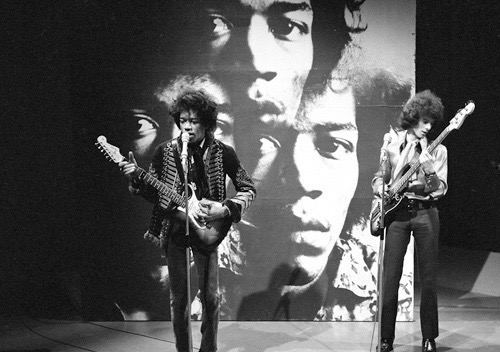“In the punk days, I could do six gigs in six venues in a week in Soho and Denmark Street… seedy little venues that put on six bands a night.” Adam Ant’s recollection of the history of Soho places Denmark Street firmly at the heart of the scene he emerged from. January 1978 alone saw him play 11 gigs, eight of which were within spitting distance of Denmark Street – the circuit around The Marquee, The 100 Club and particularly The Roxy had Tin Pan Alley at its epicenter. “I did all my demos there for every song starting with Kings Of The Wild Frontier in 1979 up until recently,” he told legendary DJ and promoter Chris Sullivan in a 2016 interview. “It’s heaven. Pop out to Soho for a drink. Break a guitar string and buy one next door. Everyone likes to come to Soho; Denmark Street has real history.”
Punk’s story, however, evolved earlier from the margins both literally and geographically. In the west, 430 Kings Road hosted different incarnations of Malcolm McLaren and Vivienne Westwood’s boutique/cultural hub (Let It Rock, Too Fast To Live, Too Young To Die, Sex); in the suburban south, the Bromley Contingent included Siouxsie Sioux, Billy Idol and Philip Sallon among others; in the east end something harder and more stripped down grew into the skinhead and subsequent Oi! scenes around bands like the Cockney Rejects. Having already played a role in everything from the beat explosion to glam rock, Denmark Street was a natural magnet for the fledgling punk scene when it arrived in central London. The very sound of the music – overdriven and distorted – was thanks in part to Macari’s guitar shop founded in 1958, and for many years at No. 25 where the fuzz pedal had been invented.
The most celebrated punk-related tenants however, were the Sex Pistols. The band moved into the upper floors of number six after manager Malcolm McLaren acquired the soundproofed rehearsal space, complete with PA, from Bill Collins, manager of doomed Beatles’ protégés, Badfinger. Jon Savage’s history of punk, England’s Dreaming records how “In September 1975 McLaren finally made a commitment to the group: when Glen Matlock, original bassist, found an advertisement for a rehearsal space in the Melody Maker, McLaren guaranteed the £1,000 deposit…the space comprised an attic over a small ground floor rehearsal room, reached by a crumbling passage between numbers six and eight. John Lydon liked it because it was dank and depressing; Steve Jones liked it because he now had a W1 address; Malcolm McLaren liked it because it was a kind of Trojan horse right in the heart of Tin Pan Alley, which had been the nub of English pop in the 1940s, 1950s and 1960s.”
The band would go on to record their first demos at No. 6, working with producer Dave Goodman and original bassist Glen Matlock, the recordings soon surfacing on the contract-breeching Spunk bootleg around the same time as their debut album. Other figures from the first wave of punk appeared on the Street at different times around then - Joe Strummer and Mick Jones attended auditions at studios there before forming the Clash; early incarnations of The Damned were also in attendance. The frenetic energy around punk would challenge its longevity. By January 1978 the Sex Pistols had already split and later that year the Television Personalities were already bemoaning ‘Part Time Punks’ on their single of the same name.
Figures from around the periphery of the scene began grafting the spirit of punk onto other musical styles – Chrissie Hynde formed the first incarnation of The Pretenders that year recording their first demos on Denmark Street; Johnny Rotten re-emerged as John Lydon with Public Image Limited, his art-noise-funk project; Shane Macgowan first produced a kind of punked-up rockabilly with the Nips, then rebooted traditional Irish folk music with The Pogues; Paul Weller fused together the energy of punk with the style of the mod revival scene buying his first guitar on Denmark Street in the process; the heavy metal scene grew rapidly from the New Wave of British Heavy Metal into the more commercial glam metal scene, specifically around the Shades record store on St Anne’s Court off Wardour Street. Hanoi Rocks frontman Michael Monroe would also later namecheck Denmark Street.
Finally, from late 1978 onwards, the Bowie tribute nights at Billy’s on Dean Street would form the breeding ground for what became the New Romantic movement, from which the defining pop, design and fashion of the entire 1980s would ultimately grow. But this ethos of DIY, iconoclasm, spectacle and shock albeit worlds apart from where it first emerged, was still in its origins unmistakably Denmark Street.
And you can soak up some Punk Rock historical vibes with a stay in our Lofthouse Apartment, in the same building where the Rolling Stones recorded their debut album, along with numerous other musical legends of that era.
The journey from punk to place is now live over at The Listening Bar, part two 'The Punk Era'.
More journal entries to read

London Haze
The history of popular music is replete with stories of artists who chafed against the constraints of smalltown England and headed to America to seek their fortune on a bigger commercial stage. But then, there was Jimi.

Denmark Street on wax
Set between Soho, St Giles and Covent Garden, Denmark Street has always had an offbeat quality. Believed to be the only street in London to still have its original 17th Century facades on both sides of the street.

